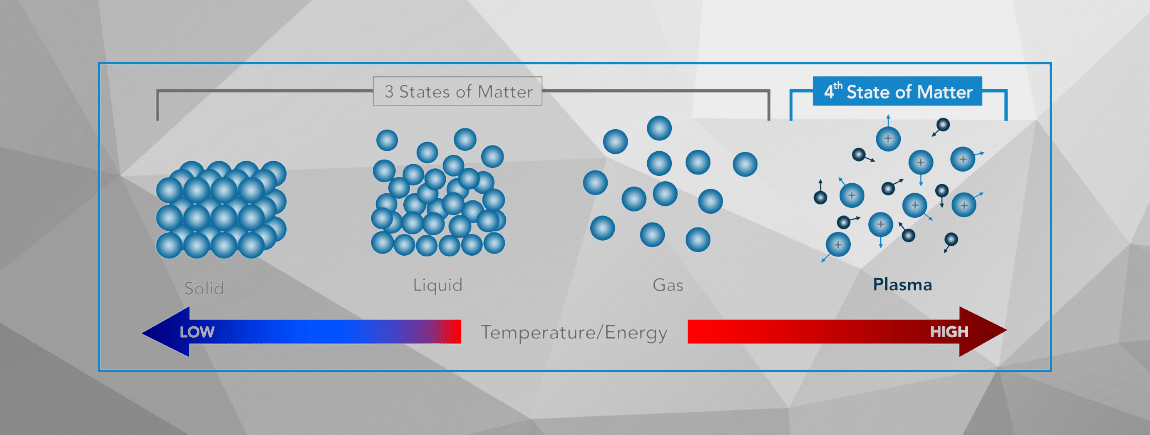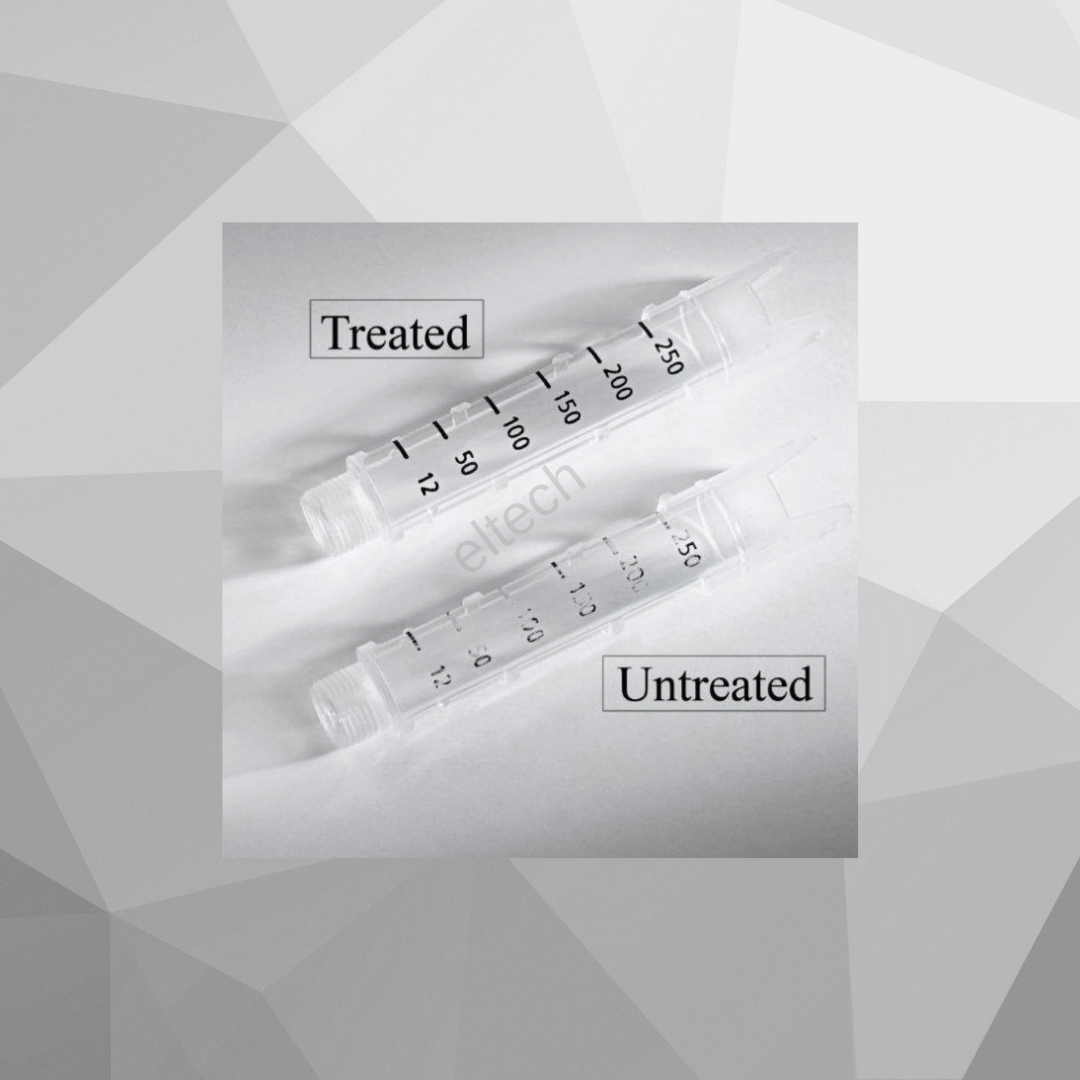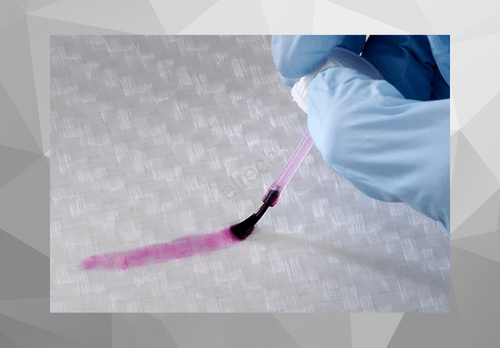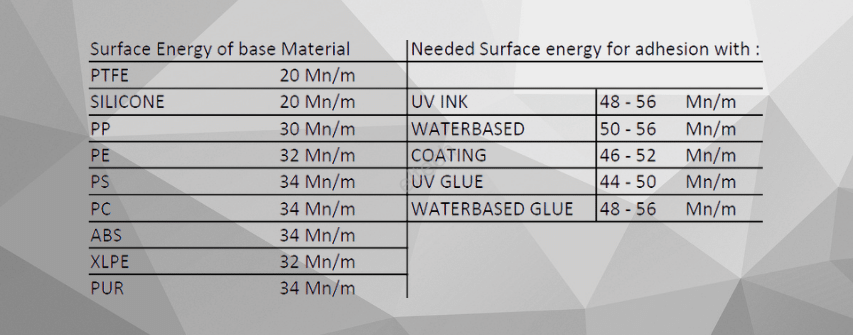- info@eltech.in
- +91-96196 86917, +91-84509 80333
Plasma is a partially-ionized gas, in which the degree of ionization fluctuates and may sometimes be very low. More than 99% of the universe surrounding us is in a plasma state. Examples of this include lightning, polar lights, sunlight or candlelight. As plasma is created by high energy input, it is considered the 4th state of matter and is typically in a gaseous state.

Plasma is generated through the creation of an electric field which ignites a gas flowing through (e.g. air or other gases) to form plasma. Plasma is quasi-neutral, but as it consists of free charge carriers or highly-reactive particles, it is energy-rich and can trigger various physical and chemical reactions. This characteristic is used in industry to generate various effects.
To be able to successfully bond, coat, print or paint polymers and metals, the surface must first meet a few requirements. It has to be very clean and has to be sufficiently active to form an adhesive bond with the coating material. Plasma pre-treatment takes care of both of these requirements: The reactive plasma species transform the finest organic layers to the gas phase during ultra-fine cleaning. And with polymers, the functional groups described above are bonded to the outer-most molecular layer, the surface polarity increases and the prerequisite for adhesive bonding with the applied material is fulfilled.
The ion and electron mixed in the plasma zone collide at high-speed on the surface of the substrate, which eliminates the contaminant ( dust & release oils etc. ) and helps the functional coating radical to stick on the surface. It is possible to get the rising effect and hydrophile effect on the surface through the above progress. This means the increase of surface energy. Plasma surface treatment system for 2D or 3D objective enhances surface energy and it leads enhancement of adhesion for those processes such as printing, coating, laminating, transforming and extrusion molding and so on.





Figure shows absolute values of surface energy for solid materials and the surface tension of many plastics including polyethylene and polypropylene is often insufficient for bonding or printing. These materials have very useful properties such as chemical inertness, a low coefficient of friction, high wear, puncture and tear resistance, etc. However, the poor wettability of these polymers presents the designer with the problem of bonding or decorating these materials. Surface treatment can improve wettability of the material by raising the material/s surface energy and positively affect adhesive characteristics by creating bonding sites. The most advanced and successful methods of surface treatment are based on a principle of high voltage discharge in air.
Eltech's plasma surface treatment machines have the functions of surface cleaning, surface activation, surface etching, surface coating, etc., which are also the most commonly used functions in surface treating.
Eltech's plasma treatment machines can clean the organic contaminants off the surface of the material.
he cleaned materials will be more suitable for bonding and spraying. In the medical supplies industry, plasma surface cleaning is safer and more environmentally friendly than traditional chemical cleaning.
Plasma surface activation refers to the nano-level activation of the surface layer of the material with the aim of enhancing the molecular activity of the surface and improving its adhesion capability.
This technology is often used as a pretreatment for applications in the inkjet & print industry.
Plasma surface etching means that after the surface of the material is processed by a plasma machine, it will exhibit greater roughness under the microscope.
This technology can improve the adhesion of materials because it can better adhere the ink to the profiles and is widely used in the inkjet & print industry and packaging industry.
After the plasma surface coating, the structure of the chemical molecule on the surface of the material changes and becomes slightly different from the chemical structure of the material itself; more free radical groups are created on the surface to improve the activation.
The treated material has a higher surface activity and facilitates subsequent bonding, printing or spraying processes.